Oregano is one of the most beloved herbs around the world. Its name stems from the Greek words oros, which means mountain, and ganos, which means joy. In other words, this herb is the joy of the mountain. Its aroma is amazing, and the taste compliments so many dishes, especially Italian, Greek, and Mexican cuisine. In addition, because of its antifungal and antibacterial properties, this small-leafed herb also has many medicinal applications.
Oregano makes a great companion plant for your garden as its aroma is known to repel certain insects. What’s more, oregano is said to attract syrphid flies (a.k.a. hover flies or flower flies) whose larvae can help control aphids on tomatoes. Broccoli, cabbage, and other brassicas can benefit from being planted near oregano as it is known to repel cabbage moth worms.
This article contains affiliate links. If you make a purchase using one of these links, I will receive a very small commission at no additional cost to you, and it will help me maintain this website. Rest assured, I only recommend products I actually like!
How to Grow Oregano
Oregano is a perennial herb that can be grown indoors or outside in your garden. If you live in an arid region, this woody herb is your friend as it is well suited to hot, dry climates. But it can thrive in more moderate areas and, depending on the variety, does well in zones 5 through 11.
If you choose to grow oregano outdoors, know that it is a member of the mint family. If you’ve ever grown mint, you know how invasive it can be. For that reason, you may want to grow oregano in a container so that you’ll be able to, well, contain it. I have one oregano plant in particular that I’ve been growing in a large pot for several years. It’s a beautiful addition to my patio garden, and it provides an abundant harvest year after year.
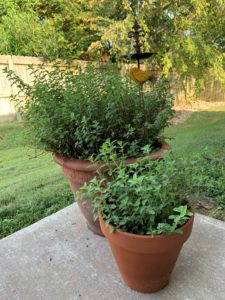
You can start oregano seed indoors six weeks before your zone’s last frost date, either in a window that receives several hours of direct sunlight each day or under a grow light.
Use good quality, well-draining potting mix with a pH level between 6.0 and 8.0. Refrain from using garden soil from your beds as the seedlings need loose, aerated soil to become established.
The seeds are small, so you’ll only need to cover them lightly with soil, especially considering that they need a bit of sunlight to germinate. Use a mister or spray bottle to water the seeds so as not to dislodge them with a heavier spray. The seeds will emerge in about a week or so. If the seedlings become “leggy,” it’s a sign they need more light.
Wait until the seedlings reach about six inches tall before thinning them out. Be careful, though; if you pull up the weaker seedlings, you’ll risk damaging the roots of the ones you’re going to keep. Instead, cut the seedling off at the soil level.
For container gardening, the size of the pot will depend on the variety you want to plant. Most varieties grow between 12″ and 18″ tall, so a container that is 10″ to 12″ in diameter should do. Mexican oregano, on the other hand, is a larger variety, and it will need a pot that is at least 12″ in diameter. Creeping oregano and golden oregano don’t need as much depth, so a container that is between 6″ and 8″ tall should be fine.
If you are going to transplant the seedlings to your garden, wait until after you’ve thinned them out, and the threat of frost has passed. Some recommend a nighttime temperature of at least 70℉ as oregano prefers warm air and soil.
If sowing seeds directly into your garden, be sure to wait until the risk of frost has passed. Choose a sunny location with good draining soil and plant the seeds according to package directions.
How to Propagate
Like basil and thyme, oregano can be easily propagated. Some prefer this method to starting oregano from seed they’ve saved since you may not end up with the variety of oregano you want because of cross-pollination.
It’s best to propagate oregano in the spring or early summer, but it can be done in the fall, although it may not be quite as successful since plant growth slows in preparation for the winter. Take a six-inch long cutting from a healthy plant, making a diagonal cut just above a node. Choose a stem that is younger and more pliable than an older, woody stem. Remove the leaves from the bottom 1/3 of the cutting. Some recommend topping off the stem, which involves removing the top inch where the new leaves are growing. This will cause the plant to put its energy into developing roots and not into new leaf growth. Insert the cutting an inch or two into soil that has been pre-moistened. You can use a rooting hormone if you’d like, but this isn’t always necessary. Be sure to keep an eye on the cutting to ensure the soil stays moist but not oversaturated. Be patient, as it may take several weeks for roots to sprout and the cutting to become established.
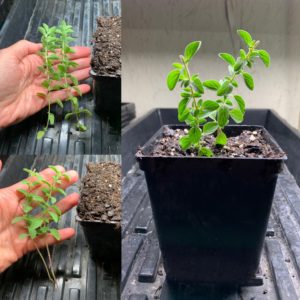
Another method for propagating oregano is to place the stems in a container of water. Select stems as mentioned above, and remove the leaves from the lower third or so. Place them in a jar filled about halfway with water (do not submerge the lower leaves), and place it in a window that gets several hours of sun. Change the water every few days. In about a week or so, roots will sprout. Wait until they are an inch or so long before transplanting them into the soil. If you’ll be taking the new transplant outdoors, be sure to harden it off. Once the plant is acclimated and growing well, prune it to encourage a more dense and fuller plant.
Sunlight, Water and Fertilizer
This joy of the mountain herb requires very little maintenance. For example, it does not require as much water as other herbs, but it’s important not to let it dry out. When the top inch of soil feels dry to the touch, it’s time to water thoroughly.
Whether seedlings or an established plant, oregano requires at least six hours of full sun, and because it is drought-tolerant, it will do very well with more sun exposure. The exception would be the gold leaf variety that may require some shade from the afternoon sun.
Oregano does not generally require fertilization. However, if it is growing in a container, you’ll want to apply a balanced fertilizer once or twice a month. Note, however, that too much fertilizer can alter the aroma and flavor.
This hardy plant has beautiful small blossoms that are either white, pink, or purple. To maintain plant growth and flavor, pinch off the buds before they bloom. If you choose to allow your plant to bloom, the bees will thank you as it’s a favorite of pollinators.
Overwintering
If you are in zone 8 or warmer, oregano is considered an evergreen. It should fare well during the colder months, but you may want to cover it during a freeze. Remaining zones need to consider cutting back the plant in the winter and covering it with mulch. Alternatively, if your oregano is growing in a pot, you can bring it indoors. When spring arrives, cut off any dead branches and wait for new growth.
Pests and Diseases
Oregano is such a resilient plant that you may not ever have a problem with it. But if you do, chances are it will be from root rot, aphids, or spider mites.
To prevent root rot, be sure to give it good drainage and refrain from overwatering. If you suspect your plant has aphids, you can learn how to identify and effectively and organically treat them in this article. If you notice spider mites, with or without webbing, here is a helpful article.
How to Harvest Oregano
You can harvest oregano anytime after it has reached about six inches tall, provided it is an established plant and not one that has been newly propagated. Harvesting sprigs will promote new growth so it’s a good idea to do so even if you don’t intend to use the cuttings. As with other plants, it’s important not to harvest (or prune, if that’s the case) more than 1/3 of the total plant.[1]
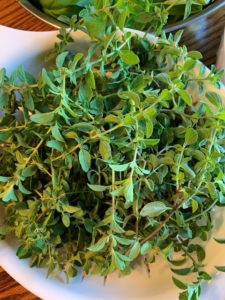
How to Preserve the Harvest
There are a number of ways you can preserve the harvest. For short term storage, roll up oregano sprigs in a damp paper towel and place them in a plastic bag in the refrigerator. The herbs will last for several days.
To preserve oregano for a longer period of time, you can dry the sprigs by hanging them indoors, or by using a dehydrator or the lowest setting on your oven (usually about 150 F). Additionally, you can place chopped oregano in ice cube trays, add olive oil or melted butter, and freeze. When you need flavored oil or butter, just thaw an “oregano cube” or let it melt in the pan. You can also place sprigs in an air-tight bag or jar in the freezer and pull them out as needed.
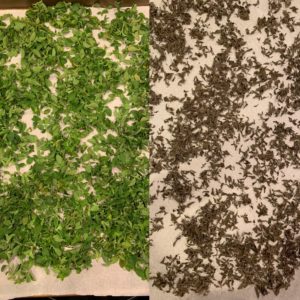
Varieties
There are many different varieties of oregano. Here are some you might like to consider growing:
Greek Oregano, sometimes referred to as true oregano, is probably the most popular variety. One advantage of this variety is that it doesn’t spread as much as other varieties.
Italian Oregano is actually a hybrid of common oregano and sweet marjoram.[2] The flavor is not as pungent as Greek oregano.
Mexican Oregano is a part of the verbena plant family as opposed to other oreganos, which are members of the mint family. It packs a stronger flavor than Greek oregano, and, as mentioned earlier, grows larger than other varieties. It is better suited for warmer climates.
Golden Oregano is a lovely ornamental variety that is gold in color, as its name suggests. It grows well in containers or hanging baskets.
Cuban Oregano is actually a succulent, but its aroma and flavor are similar to oregano, hence the name. Be advised, however, that the flavor is quite a bit stronger than Greek oregano.
Cleopatra Oregano has silver-grey leaves and is often used as a ground cover. It has more of a peppermint flavor and is milder than Greek oregano.
Regardless of which variety you choose to grow, oregano’s culinary and medicinal uses and its low maintenance make it a wonderful addition to any garden.
Note: If you found this article helpful, please share it with someone you feel might be interested in reading it. Thank you!
[1] Some recommend not pruning more than 1/3 of the plant, while others say 2/3 is acceptable. I tend to err on the side of caution by not pruning more than 1/3 of the plant unless it is diseased or infested and more needs to be pruned.
[2] Many people don’t realize that marjoram is considered an oregano.
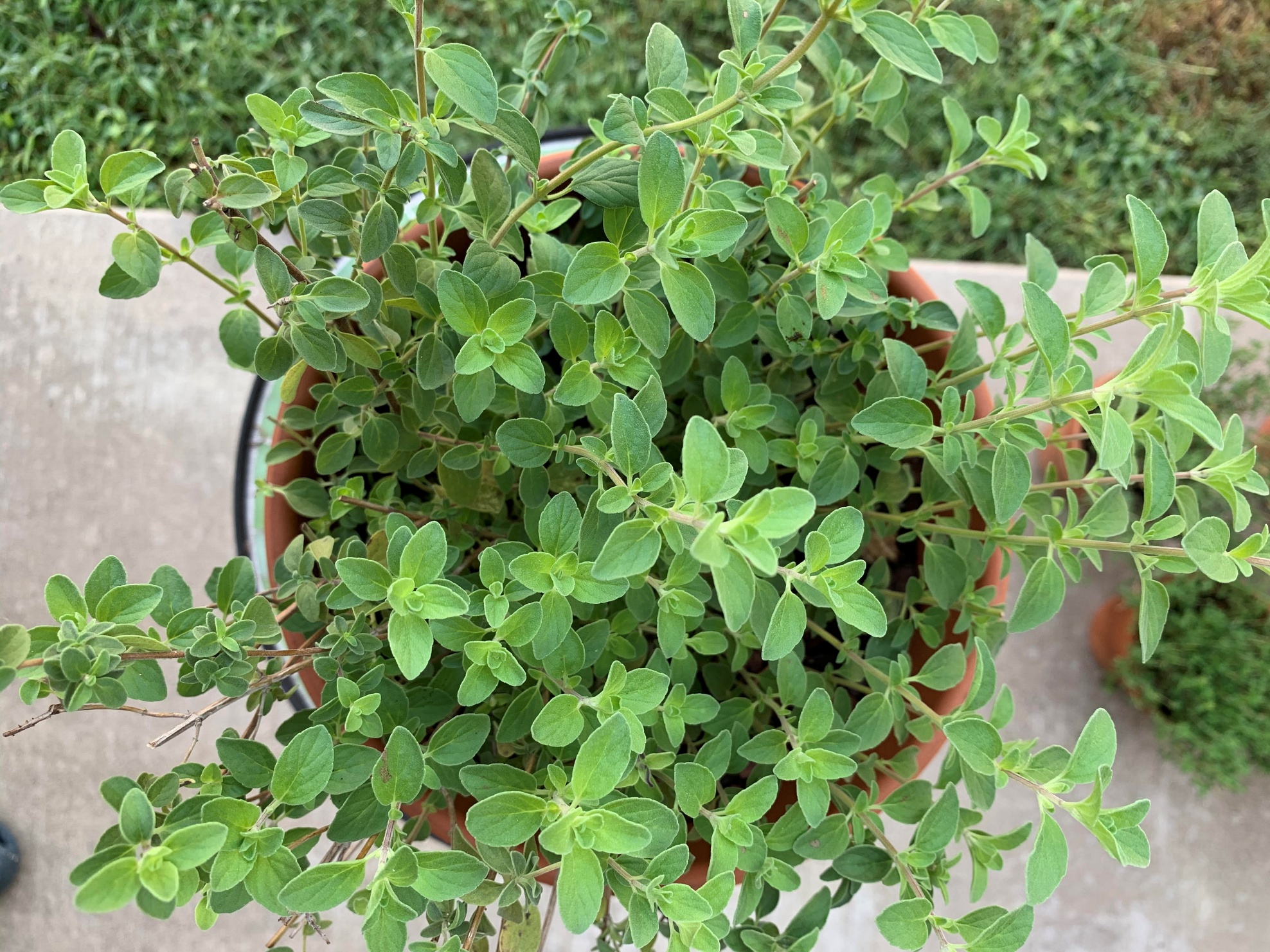
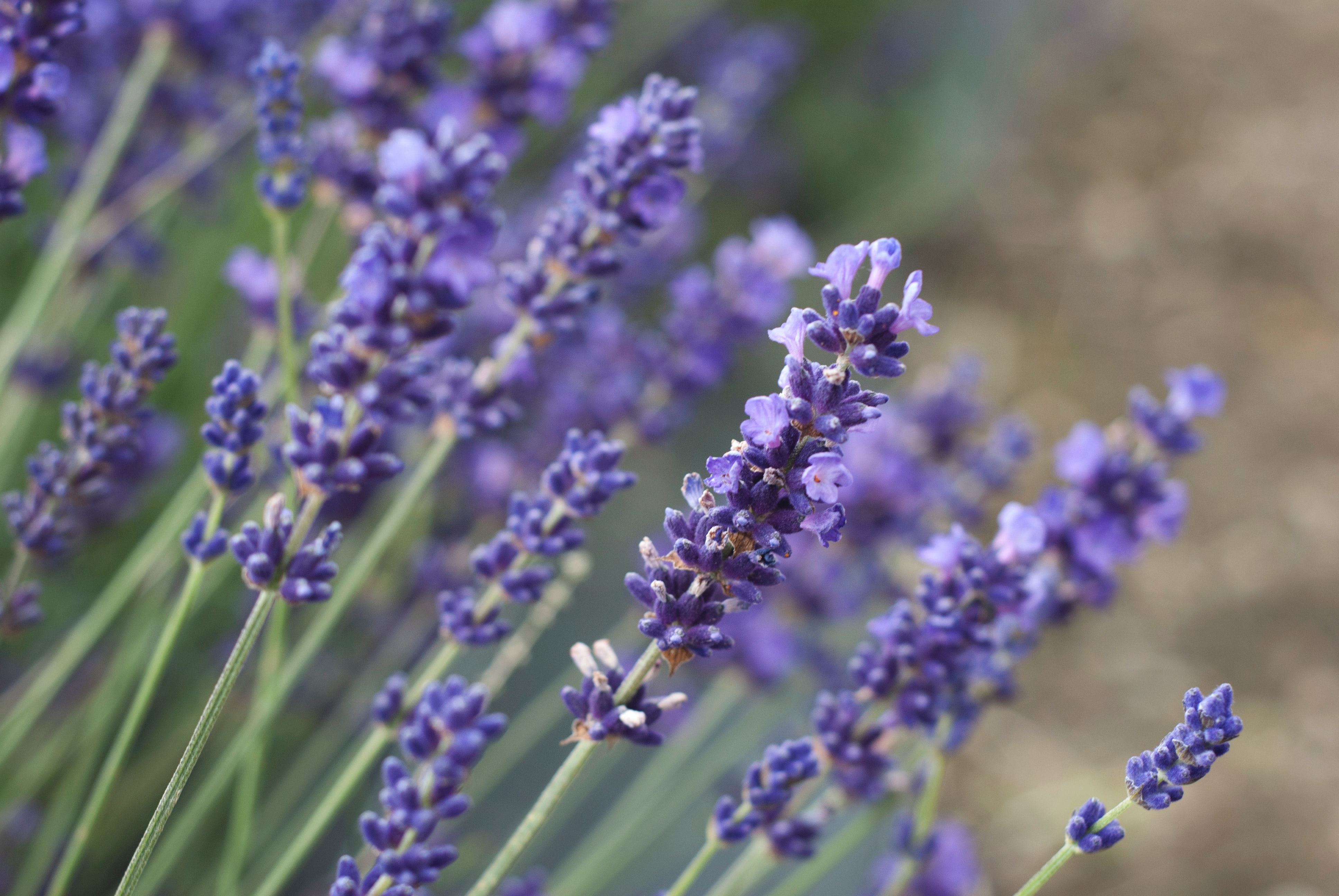
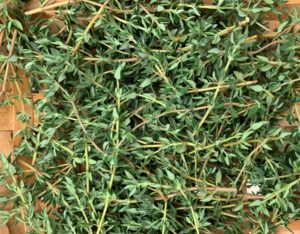
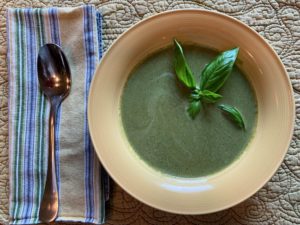

‘Louisiana Green Velvet’ is good for big areas; it is vigorous and its plants grow to be 6 feet tall. It is also smooth and spineless. Generally, okra should be pulled up and disposed of at the end of the growing season. However, there is something called “ratooning,” which is the process of cutting down the okra plants in late summer to encourage a second production of okra into fall. This is usually done in late July to mid August, and stems are cut down to about 6 to 12 inches. Depending on where you are located, it’s likely too late in the season for ratooning this year, so we would recommend pulling up your plants if they’ve stopped producing and your first fall frost date is less than 10 or so weeks away.
Hi Tabitha,
Thanks for highlighting the benefits of growing Louisiana Green Velvet okra! I have heard of ratooning, but have never done it myself. I may have to try it next summer. Thanks for visiting the website!